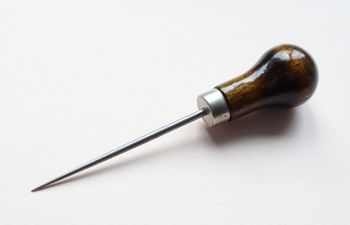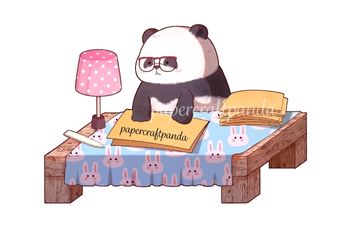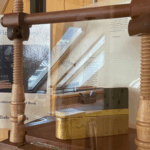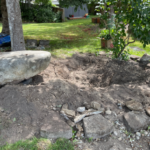Understanding what to pay yourself for a labor intensive trade like bookbinding can be difficult. As craftspeople, we often undervalue and underestimate the time we spend making books, boxes and other fun binding items. Miscalculations like these can tank your small business in the long term, so it’s important to learn how to do it right. In this post, I’ll walk you through a simple process to calculate labor costs for handmade books.
What are labor costs in bookbinding?
You might think of labor costs as “the time I spend making a book,” but it’s more than that. From an accounting point of view, “labor costs” are part of CoGS (cost of goods sold) calculations and cover everything from intake and setup to the binding process itself to business stuff like answering questions or listing a book on Etsy. All of these activities have a time cost and each should be tracked if you want to be truly successful in your business.
Time activities you should be tracking
- Intake and setup (customer discussions, planning, layout and design)
- Materials prep (making paste or PVA mix, measuring, cutting, folding, paring, laminating etc.)
- Bookbinding processes (collating, jogging, piercing, sewing, spine treatments, rounding, backing, lacing, sanding, casing, etc.)
- Finishing (stamping, tooling, embossing, edge gilding, etc.)
- Delivery (preparing and packing an order, driving to the post office, etc.)
- Business management (product photography, listing for sale, answering emails or questions, ordering materials etc.)
Record the time spent in each of the areas using a log of your choice. Track the information across three different books of the same binding style or type.
Feel free to read my post, How Long Does it Actually Take to Make a Book, to see how I chose to track the setup, materials prep and bookbinding processes. I use the same process to track delivery and business, too.
“Direct” & “Indirect” time
Once you’ve tracked time across each category, arrange the activities into “book specific” and “all books” categories. Total the time spent in each category.
- “Book specific” activities are geared toward a specific book or project. Let’s think of this as “direct.” Things like materials prep for a given book, folding, collating, piercing, spine treatments, etc.
- “All books in general” activities affect all books or projects. We can think of this as “indirect.” Stuff like answering emails or questions, listing products, taking photos, ordering materials, etc.
Divide the indirect activities by the number of books produced (in this case, we tracked 3 different books).
Example:
- I spend 9.5 hours creating a flat back case binding with sewn linen supports. This time is the sum of all “direct” time.
- I spend 1.5 hours ordering materials, answering emails and listing products on Etsy. This is the sum of all “indirect” time.
Divide indirect time (1.5 hrs) by the number of books produced (3):
1.5 hours / 3 = 30 minutes.
Now add the indirect time (30 minutes or 0.5 hrs) to the total direct time (9.5 hrs):
0.5 hrs + 9.5 hrs = 10 hours.
10 hours is what I should be charging for each book. Now, let’s figure out how much to charge per hour.
How much should I charge for my time?
Most bookbinders struggle with this question, but it’s actually quite simple. Ask yourself, “How much would I expect a bindery to pay me per hour for this work?”
The stuff we’re doing requires a specific set of trade skills, so most of us would expect something higher than minimum wage. Many book makers stumble at this step. They’ll look me straight in the eye and say, “I’m just a beginner, so I don’t think my time is worth as much as someone who has been making books for 10+ years.”
Sigh.
Please do not confuse the quality of your work with the value of your time.
These two things are not the same. Just because you’re a beginner doesn’t make your time any less valuable than that of a more experienced binder. You just need to be realistic. The same process might take you twice as long to complete as someone who has been doing this for 20+ years, so we need to consider that when selecting an hourly rate.
Let’s work with the 10 hours value I found in my earlier example.
Option 1: Use a current minimum wage
What is the minimum wage in your state or country (if any)? In the state of Washington, USA, the minimum wage for 2022 is $14.49 per hour. This isn’t a living wage (sadly), but it’s a good place to start.
To figure out what you should be paid per book, begin by multiplying the minimum wage value against the total time spent making books.
Example:
Let’s use the 10 hours I determined earlier for myself.
$14.49 (min. wage) x 10 (total hours required to produce one book) = $149.49
Based on this formula, I should be charging $149.49 for labor costs on top of the cost of materials. This will probably price my book out of the market (more on that later), but it’s important for you to see.
Option 2: Set a custom rate
Most bookbinders can’t make a full time living right away, so they choose to supplement their existing income selling books on the side. You can be much more flexible with the hourly rate when your livelihood doesn’t fully depend on it.
Let’s say I’m comfortable making $10 an hour. If it takes me 10 hours to produce a book, I should charge $10 x 10hrs = $110.00 in labor costs. Once again, I’m priced out of the market if I try to charge this.
By now, you’re probably wondering, “How does anybody make money with bookbinding???”
If labor costs are this high, how can I be profitable making books?
Believe it or not, you can have a profitable bookbinding business. It won’t be fast or easy, but it is possible. In order to reach profitability, you’ll need to have patience and:
- Build your reputation. Successful bookbinders have an excellent reputation for quality and a good referral network.
- Increase your skills to decrease book making time. This will decrease labor costs and increase profit margins.
- Optimize your business to reduce costs without sacrificing quality.
Should I avoid charging labor costs?
Labor costs should always be tracked, but what you charge for labor is up to you.
When I started selling books, I only charged for materials + 30% markup. I couldn’t cover my labor costs, but I was able to purchase more tools, materials and equipment. The new tools, materials and equipment allowed me to experiment and better understand the bookbinding process. Insights like these and extra practice improved my skills. Eventually, referrals picked up.
I did all of this while working a full time 9 to 5 job with a 3 hour commute each way, so it wasn’t easy or fast. It took about three years before I could finally pay myself a meager wage.
Over the years, I was more focused on getting better at the craft than at making money. This definitely helped me maintain some sanity.
There are exceptions
As with anything, there are exceptions. If your books meet an in-demand market need or reach a wider audience, you could start making a profit right away.
I have an acquaintance who makes replica books for cosplay artists. In the beginning, she was making foam weapons with intricate lighting for herself to cosplay. One day, she decided to incorporate the lighting into a handmade book. Within a couple of months, she was struggling to keep up with a backlog of requests from fellow artists. She already had a decent reputation within the cosplay community that helped when the crossover into bookbinding happened.
Perhaps you have a specific skill set that could lend itself to the world of bookbinding without sacrificing form or function. If so, your road to a decent wage will be much faster.
At the end of the day, if you truly love making books, don’t give up. True passion is always rewarded, but often requires incredible amounts of patience and support. I’m wishing you the best of luck!
More bookbinding goodness
✨ What tools do I need to get started bookbinding?
- Bookbinding Tools & Supplies Quick Start Guide – learn all about book making tools, which to buy first & where to go online
- Pick up my popular Complete Starter Bookbinding Tools Kit – all the bookbinding essentials in one spot
🌟 Looking for a simple way to start making books?
Try a Complete Book Materials Kit. Each one has everything you need (+ tutorials & videos) to make a beautiful book without all the fuss.
Thank you for taking me along on your book making journey!
Misty












